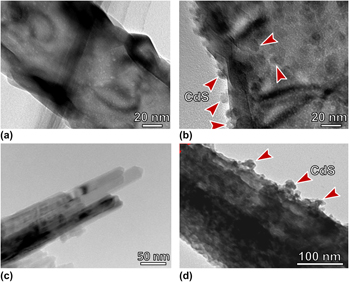Crossref Citations
This article has been cited by the following publications. This list is generated based on data provided by
Crossref.
Shaislamov, Ulugbek
and
Yang, Bee Lyong
2013.
CdS-sensitized single-crystalline TiO2 nanorods and polycrystalline nanotubes for solar hydrogen generation – ERRATUM.
Journal of Materials Research,
Vol. 28,
Issue. 6,
p.
905.
Ramakrishnan, Vivek
Kim, Hyun
Park, Jucheol
and
Yang, Beelyong
2016.
Cobalt oxide nanoparticles on TiO2nanorod/FTO as a photoanode with enhanced visible light sensitization.
RSC Advances,
Vol. 6,
Issue. 12,
p.
9789.
Shaislamov, Ulugbek
Krishnamoorthy, Karthikeyan
Kim, Sang Jae
Abidov, Amir
Allabergenov, Bunyod
Kim, Sungjin
Choi, Sooseok
Suresh, Rai
Ahmed, Waqar Muhammad
and
Lee, Heon-Ju
2016.
Highly stable hierarchical p-CuO/ZnO nanorod/nanobranch photoelectrode for efficient solar energy conversion.
International Journal of Hydrogen Energy,
Vol. 41,
Issue. 4,
p.
2253.
Shaislamov, Ulugbek
Krishnamoorthy, Karthikeyan
Kim, Sang Jae
Chun, Wongee
and
Lee, Heon-Ju
2016.
Facile fabrication and photoelectrochemical properties of a CuO nanorod photocathode with a ZnO nanobranch protective layer.
RSC Advances,
Vol. 6,
Issue. 105,
p.
103049.
Carrera-Crespo, J. E.
Rincón, Marina E.
González, F.
Barrera, E.
and
González, Ignacio
2016.
Improving the contact properties of CdS-decorated TiO2 nanotube arrays using an electrochemical/thermal/chemical approach.
Journal of Solid State Electrochemistry,
Vol. 20,
Issue. 10,
p.
2713.
Ben Taieb, S.
Pham Truong, T.N.
Chaguetmi, S.
Ben Naceur, J.
Bardaoui, A.
Gannouni, M.
Decorse, P.
Mouton, L.
Nowak, S.
Mammeri, F.
Chtourou, R.
and
Ammar, S.
2017.
An easy-to achieve approach for the fabrication of CdS QDs sensitized TiO2 nanotubes and their enhanced photoelectrochemical performance.
Journal of Photochemistry and Photobiology A: Chemistry,
Vol. 332,
Issue. ,
p.
337.
Nguyen, Van-Quyet
Sheraz, Mahshab
Phan, Thi Chuyen
Chung, Pil Seung
Han, Kyumi
and
Seo, Hyunwoong
2025.
Effect of annealing temperature on morphology, optical, and photocatalytic characteristics of hydrothermally synthesized Bi(Ti0.5Co0.5)O3 perovskite nanorods.
Journal of Power Sources,
Vol. 631,
Issue. ,
p.
236240.



